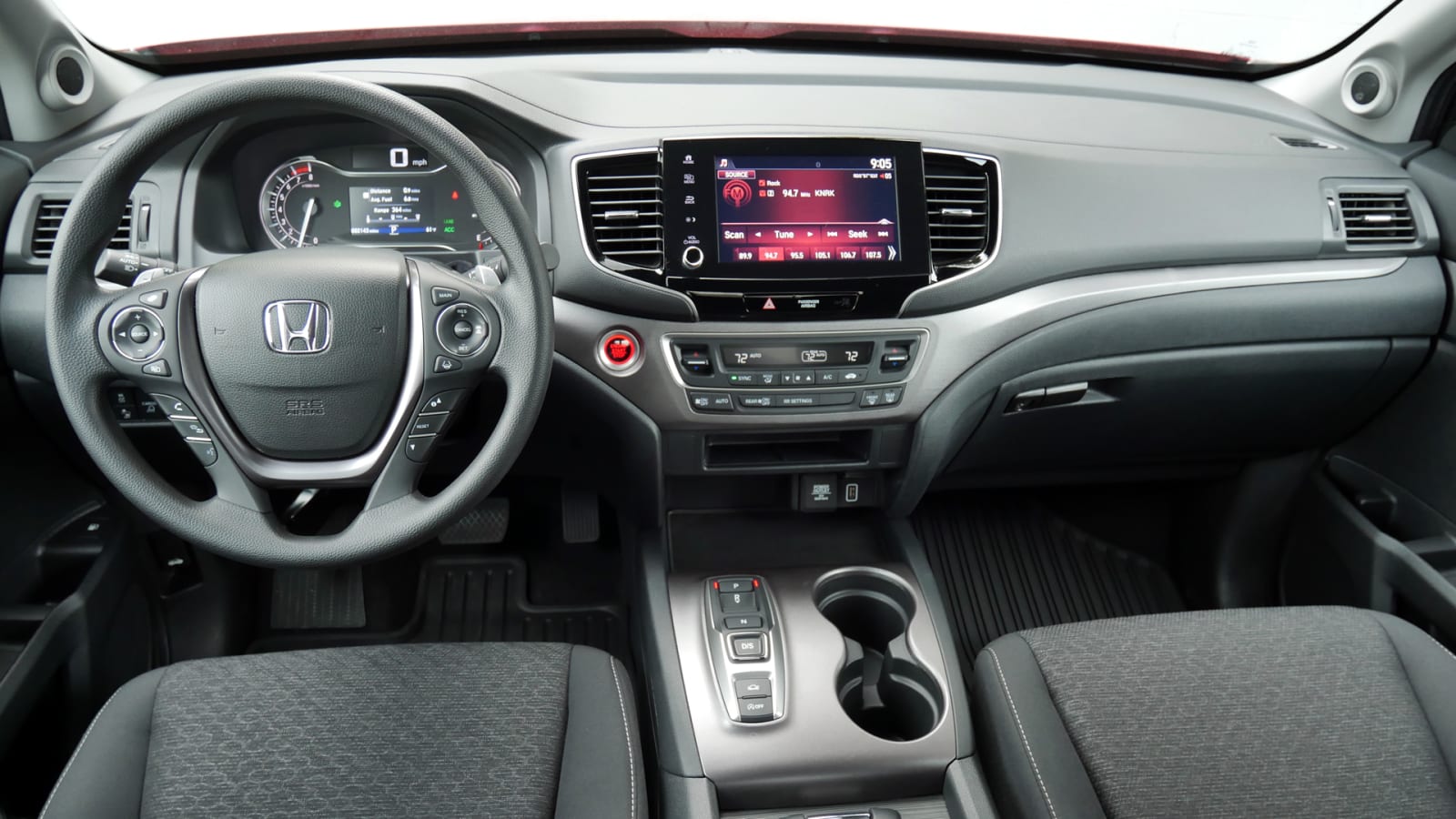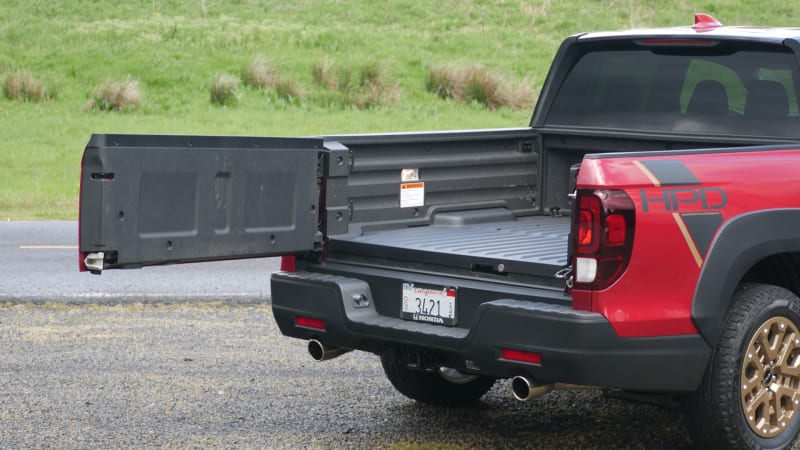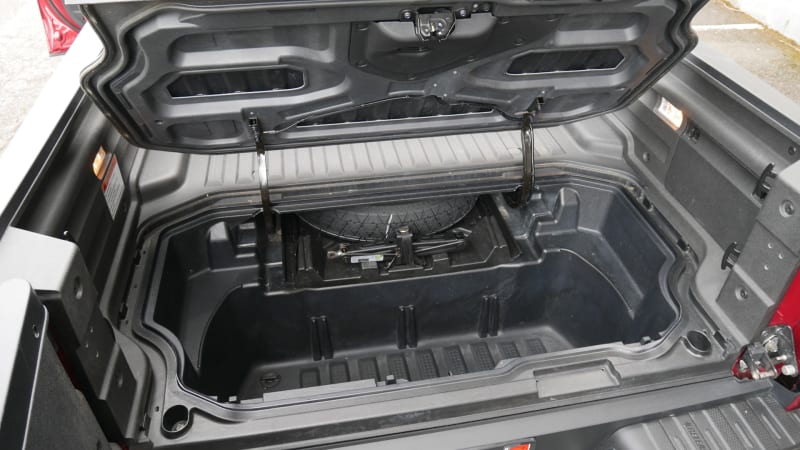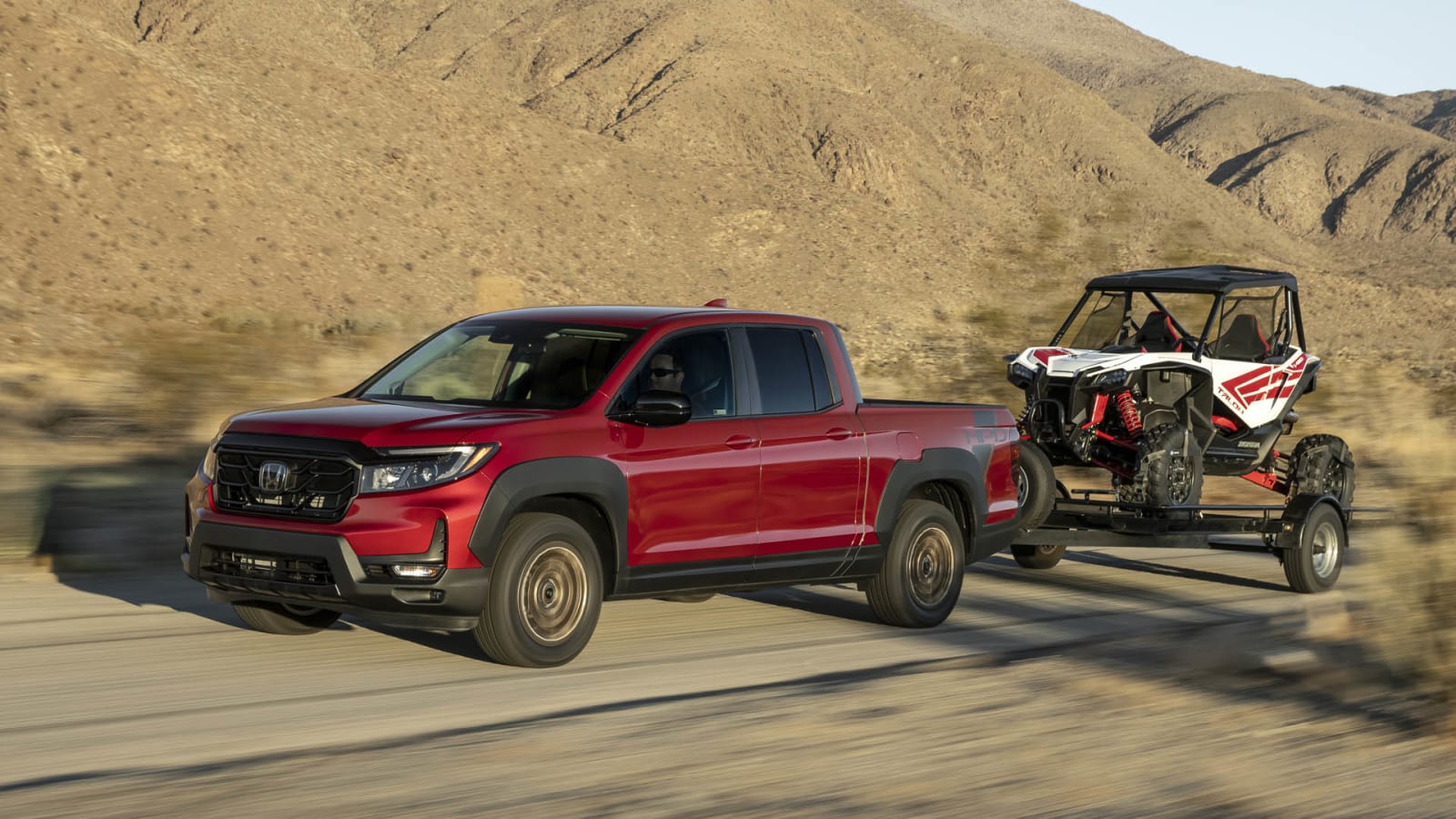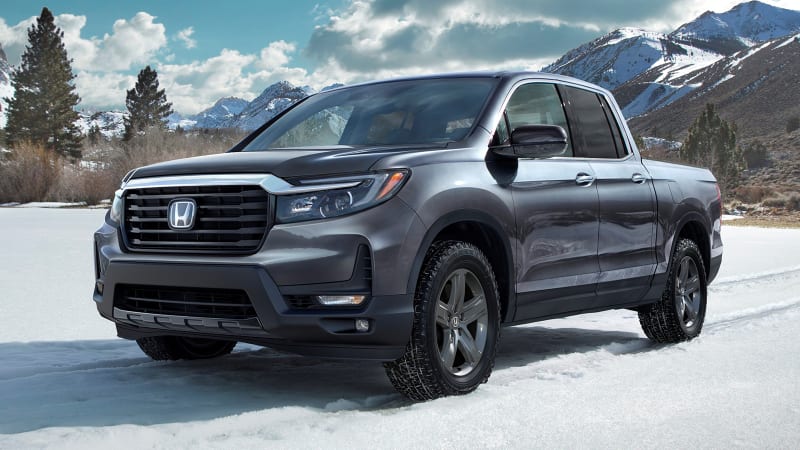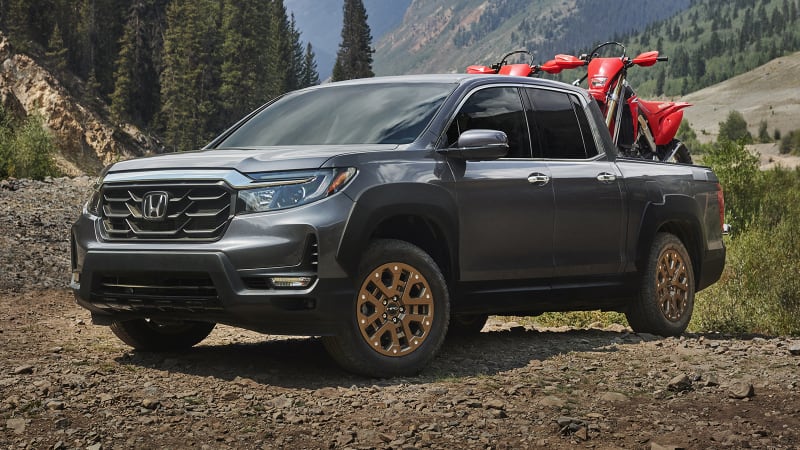We’re guessing that it’s impossible to convince a majority of the truck-buying population that the 2021 Honda Ridgeline would be right for them. Quite simply, to them, the Ridgeline is not a truck. It may have a pickup bed, but its unibody crossover architecture stands in sharp contrast to the body-on-frame truck norm. It can also tow only 5,000 pounds, has minimal ground clearance and just one cab/bed/powertrain combination. As such, the styling updates made for 2021 to make the Ridgeline look more macho seem unlikely to make much of a difference. If it looks like a duck, but you know it’s a goose, it still isn’t a duck. Also, a lot of the macho-look heavy lifting comes courtesy of the new HPD Performance package, pictured here. Other ’21 Ridgelines don’t go quite as far.
So the Ridgeline still may be a goose, but that’s not actually a bad thing considering its unique crossover architecture grants it a multitude of advantages not shared by other, “real” midsize trucks. It rides and handles far better; its interior is more spacious, comfortable and quiet (it also has better storage and higher-quality materials); and its unique bed features a 7.9-cubic-foot trunk, the Dual Action tailgate that drops down and swings out, and the availability to turn itself into a giant speaker. It’s a tailgater’s dream. So even if it’s isn’t a real truck, plenty of real people will still find plenty to like about the 2021 Ridgeline.
What’s new for 2021?
The Ridgeline looks a little more rugged for 2021 (and a little less like a Pilot) courtesy of a bigger, blockier grille, a new bumper, twin exhausts and an available HPD Performance package that further beefs things up with a unique grille treatment, black fender flares, all-terrain tires and gold wheels. It’s available on all trim levels, including the base Sport (pictured).
Other updates include a wider track width and all-wheel drive being made standard (no more front-drive Ridgeline). There’s also now a volume knob, but the rest of the underwhelming infotainment system remains the same.
What’s the Ridgeline interior and in-car technology like?
For better and for worse, the Ridgeline interior is copy and pasted from the Honda Pilot from the B-pillars forward. That means it’s not an especially attractive space, and certainly not one that screams “tough, fun truck!” Then again, it’s not as if the Ford Ranger or Chevy Colorado do that, either. That’s the “for worse” bit. For better, the Pilot interior offers exceptional small item storage and that basically carries over to the Ridgeline unchanged. The roomy covered center bin is especially handy for keeping even sizable items away from prying eyes or from flying around the cabin.
But now, back to the worse bit. The Pilot/Passport/Ridgeline’s infotainment system is the interior’s weakest attribute. Yes, it gains a volume knob for 2021, but that doesn’t change the convoluted menu structure, rudimentary navigation system (if so equipped) and lack of physical supporting buttons.
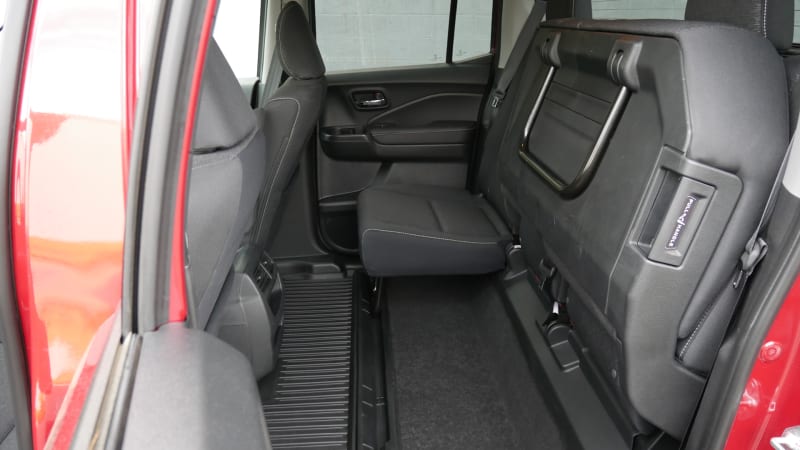
How big is the Ridgeline?
On the outside, the Ridgeline is basically the same length and height as other midsize crew cab pickups. Its wheelbase isn’t quite as long and it has less ground clearance (7.6 inches), but it’s notably wider – by a whopping 5.3 inches compared to the Ford Ranger. However, the Ridgeline’s unibody “crossover” construction means these similar dimensions on the outside do not translate into similar measurements inside. Simply put, the Ridgeline cabin is far roomier and more comfortable for passengers. You can see this most in terms of rear seat legroom, and all that extra width results in a similar advantage in shoulder room. There’s also the matter of interior height: There’s more of it in the Ridgeline, meaning the seats can be higher off the ground (especially compared to the Toyota Tacoma), resulting in greater comfort even if headroom is similar.
Unlike most of the other midsize trucks, the Ridgeline does not offer a smaller, “extended cab” body style. There is also only one bed length, 5 feet 4 inches, which is consistent with the short beds that typically come standard with the crew cabs of other midsize pickups. The Tacoma and Colorado/Canyon crew cabs alternately can be paired with a longer bed; the Ranger cannot.
None of those competitors, however, offers the unique attributes of the Ridgeline’s bed. That starts with the clever Dual Action tailgate, which drops down like normal or swings out like a door. The latter is helpful for climbing into the bed or leaning in to get something, and it also provides access to the Ridgeline’s other unique feature: a trunk. This water-tight 7.9-cubic-foot space can fit at least three medium-sized pieces of luggage and has a plug in the bottom to let you wash it out or fill it with ice to create a gigantic onboard cooler. Finally, the top two trim levels feature the Truck-Bed Audio System, which basically turns the bed into a giant speaker. It’s pretty cool.
What are the Ridgeline fuel economy, performance and towing specs?
The Ridgeline sure keeps things simple by offering only one powertrain and drivetrain combination: a 3.5-liter V6 that sends 280 horsepower and 262 pound-feet of torque through a nine-speed automatic to a torque-vectoring all-wheel-drive system. You want rear-wheel drive? Too bad, the Ridgeline is based on a front-wheel-drive platform. You want front-wheel drive? No, of course you don’t. You aren’t alone, Honda discontinued that option for 2021.
EPA-estimated fuel economy is 18 mpg city, 24 mpg highway and 21 mpg combined. Considering the crossover architecture, nine-speed automatic and Honda’s reputation, you’ll probably be surprised to hear that combined estimate is actually 1 mpg worse than a Ford Ranger 4×4 and the same as a Ford F-150 4×4 with the 2.7-liter turbo V6.


